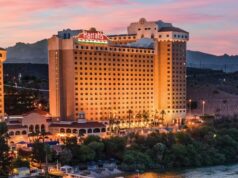
VANCOUVER, B.C.—A green facility since it opened in 1987, the Vancouver Convention & Exhibition Centre (VCEC) is on track to triple its size in time for the 2010 Winter Olympics. The addition to the existing building will be a dramatic one and will include a six-acre green “living” roof, seawater heating and cooling, a fish habitat built into the building’s foundation, and an on-site water treatment facility.
Forty percent of the addition will sit over the water, creating a striking contrast to the famous fabric roof sails that are part of the original building. According to Catherine Wong, vice president of operations for VCEC, the developers of the addition will pursue a Leadership in Energy and Environmental Design (LEED) gold rating for the project.
The new building and plaza are expected to be completed by spring 2009. Vancouver Convention Center Expansion Project Ltd. is overseeing the expansion and was created specifically for it. It is expected to generate $1.5 billion in economic benefits for British Columbia and 6,700 person-years of employment during construction. The new and existing facilities will serve as the international media and broadcast center for the 2010 Olympic and Paralympic Winter Games.
Not Your Typical Roof
The green roof on the new structure will include approximately 400,000 plants indigenous to the British Columbia area. It will contain drainage and water recovery systems that will send the water to the center’s water treatment system for reuse in the building, for irrigation of the roof, or for return to the inlet.
“The planted roof will cover the entire addition,” Wong says. “It will be aesthetically pleasing, add to the acoustical quality of the building, and help minimize any heat island effects.”
Grey and black water recycling systems will ensure that as much water as possible will be reused.
“The clean water that goes through the kitchen, for example, will be treated by the water treatment system and then reused in the restrooms,” Wong says.
When the original center was constructed, seawater was pumped through a heat exchanger to help heat and cool it. A similar, more up-to-date system will be used to heat and cool the new structure.
Marine Life Health Considered
A fish habitat is being built into the building foundation to ensure that marine life returns to the area as quickly as possible after construction. Concrete slabs in a stepped formation will encourage this.
“We are taking advantage of new technologies and building standards,” Wong says.

The VCEC has always emphasized environmental responsibility in its operations. As part of its co-mingled recycling program, almost half of all of the center’s waste—batteries, wood, metal, glass, plastic, etc.—is recycled. VCEC operates scratch kitchens that emphasize local and organic options and that donate leftover food to charities.
“We avoid heavily packaged foods,” Wong says. “We use only wines from British Columbia and we encourage our distributors to take back and reuse packaging.”
VCEC was designated a Power Smart Convention Center by BC Hydro’s Power Smart Partners in Business Program after converting to state-of-the-art energy efficient lighting, HVAC, and energy control systems. Rest rooms and meeting rooms have motion sensors for lighting and HVAC systems are turned down during low occupancy periods.
The rapidly growing VCEC has established a reputation for its green meetings emphasis. The third session of the World Urban Forum won a Gold IMEX 2007 Green Meetings Award in Frankfurt, Germany earlier this year. The 10,000-person event was held at VCEC.
Go to the Vancouver Convention & Exhibition Centre.
Glenn Hasek can be reached at editor@greenlodgingnews.com.







